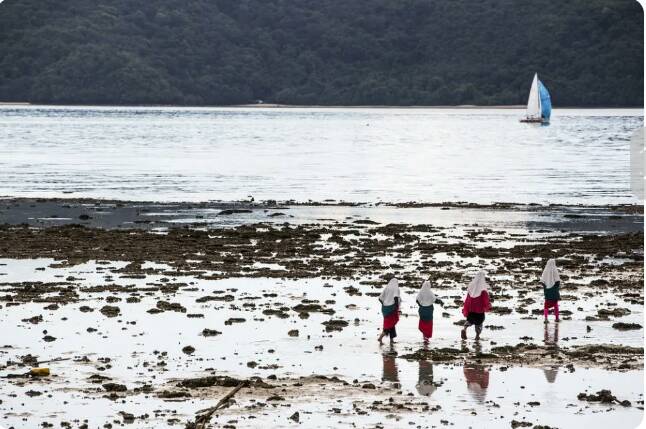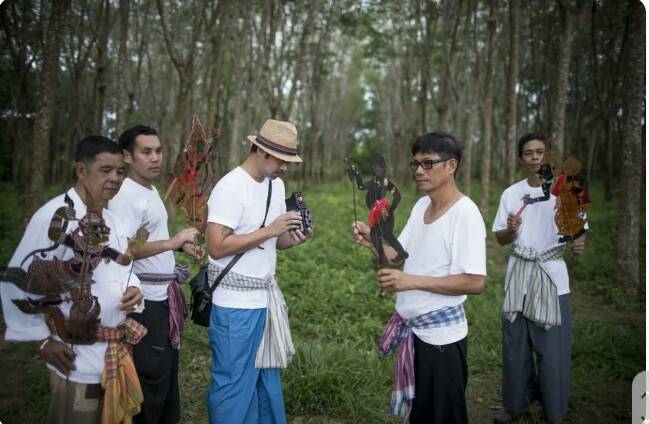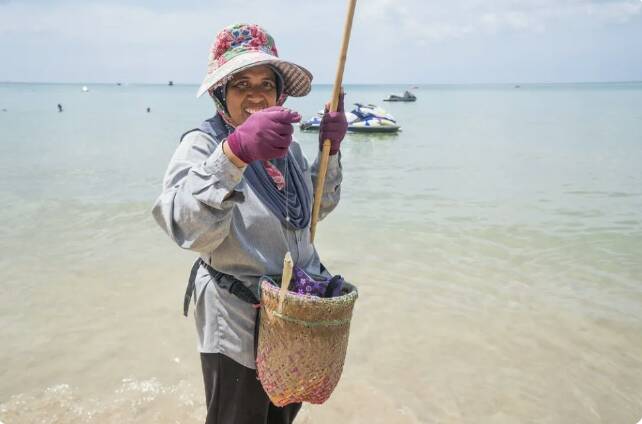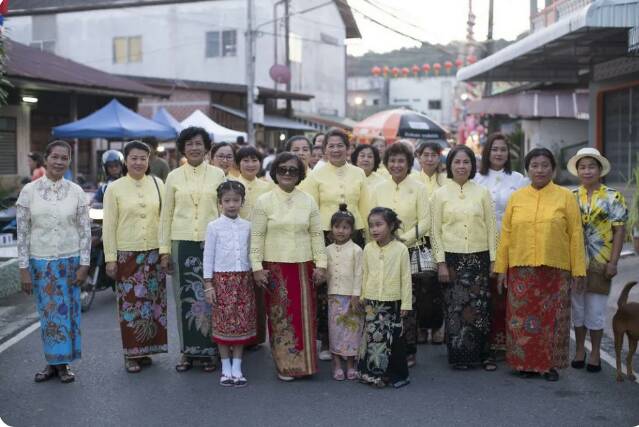Phuket’s Community-based Tourism is a Multicultural Treasure
Phuket’s Community-based Tourism is a Multicultural Treasure
วันที่นำเข้าข้อมูล 18 Apr 2022
วันที่ปรับปรุงข้อมูล 18 Apr 2022
Known affectionately as the Pearl of the Andaman, Phuket is undoubtedly one of Thailand’s most coveted destinations for locals and visitors alike. In fact, according to UK-based holiday search website Holidu, the island ranks among the top 10 best cities for workation, or working vacations.
But there’s more to Phuket than “James Bond Island” (Koh Khao Phing Kan). As a matter of fact, a number of ethnic communities thrive in the province, each bringing their own distinct cultures and identities that make Phuket a multicultural treasure.
In collaboration with Signature of Phuket, Thailand NOW offers a glimpse into the province’s noted communities and their trades, traditional garb, and unique artistry.
Phuket’s Community-based Tourism is a Multicultural Treasure
- Baan Sapam
- Laem Panwa
- Bang Khon Tee
- Liphon Tai
- Nok Lay
- Tha Chatchai
- Inclusive growth through community-based tourism
Baan Sapam

Locals in white outfits gathering in front of the Sapam Shrine, or Kuan Te Kun, for the vegetarian festival. Source: Signature of Phuket Tin miners by trade, Baan Sapam is named for hua sapam, a tool used to mine the ore. Presently, though, the village has become more synonymous with its unique traditional beliefs and superstitions, thoroughly befitting the nickname ao haeng sattha, or “bay of faith.”
The locals are known for dressing in Phuket’s traditional baba-nyonya outfit as well as traditional Chinese ensembles, due to their mostly Thai-Chinese ancestry. As such, the people of Baan Sapam take part in extravagant celebrations of traditional Chinese festivals, such as Chinese New Year and the Thai Vegetarian Festival. The famed Mee Sapam restaurant sells Hokkien mee, a Southeast Asian noodle dish that originated in China.
Laem Panwa

Source: Signature of Phuket Laem Panwa, a cape jutting into the Andaman Sea, is among the most visually appealing locations in Thailand, with Instagrammable beaches, waterfalls, and an endless blue horizon. Though driven by tourism, the Panwa way of life traditionally revolved around fisheries and pearl cultivation.
The inhabitants of Cape Panwa are majority Muslim, observing religious occasions in the Islamic faith. On these occasions, people of Arabic descent can be seen wearing the jubah outfit, while those of Peranakan descent can be seen wearing the baba-nyonya. Languages commonly spoken include Malay, as well as the central and southern Phuket dialects of Thai.
Bang Khon Tee

A visitor posing with Bang Khon Tee villagers and their colorful batik fabric. Source: Signature of Phuket Though it has several rivers, Phuket has never been densely populated. The golden rule of commerce used to be that when one shop opens up, another shop must wait for it to close. This rule is where Bang Khon Tee gets its name, which comes from bang, meaning “river,” and khon la tee, meaning “one by one.”
As the majority of locals in the community are Muslims, it’s common to find villagers in Thai Muslim clothing. On special occasions, men can be seen wearing the taqiyah cap, and women wearing the nonya (also, nyonya) kebaya dress. The community is also known for its vibrant handicrafts (🇹🇭), including their distinct hand-painted batik textiles.
Liphon Tai

Liphon Tai residents sharing their traditional nang talung puppets. Source: Signature of Phuket The community of Liphon Tai, historically populated by Chinese immigrants, is over 90% Buddhist. The community name is derived from the leek phon, or “to get away.” Historical records show that this location is where the Thai heroines, Thao Thep Krasattri and Thao Si Sunthon, sought asylum from the Myanmar army.
One of the most renowned traditions practiced in the community is that of nang talung: southern shadow puppetry. The term itself is a combination of the word nang, meaning leather, and talung, short for Pattalung province, the originator of the performance.
Locals in Liphon Tai hold a wai khru ceremony, in the belief that nai nang talung, the puppet master, protects and brings prosperity to the village. In Thailand, the wai khru ritual is a way for students to pay their respects to their teachers, whether they be grade school teachers, Muay Thai trainers, or puppet masters.
Nok Lay

A local angler in Nok Lay demonstrating their traditional fishing methods. Source: Signature of Phuket Originally a Muslim-majority community, Nok Lay village has plenty of natural resouces, allowing for a wide range of occupations. As the multitudes of tourist attractions drew travelers from far and wide, the community eventually grew to be more multicultural, shifting the balance of languages spoken to include central Thai and English in addition to the southern Phuket dialect.
While Nok Lay has adapted to the growth of tourism, the community holds their traditions in high regard, conserving their craftsmanship, folk dance, and cuisine. Dishes such as sour fish soup, kaeng som pla, and phak lin haan soup highlight the community’s culinary sensibilities.
Tha Chatchai

Tourists interacting with Moken children in the village. Source: Signature of Phuket Tha Chatchai, the gateway from Phang Nga to Phuket, was so named during a visit by King Rama VII to Phuket. The pavilion built to serve the monarch was located near the port (tha) and carried a chatra—an auspicious symbol for the Thai monarch—the community naturally acquired the name Tha Chatchai.
According to Signature of Phuket, when you visit the community, you are essentially “entering Phuket through the home of the Moken.” As Tha Chatchai comprises two areas inhabited by the Moken—Baan Hin Look Diew and Baan Lhaem Lha—tourists can expect to observe fascinating ethnic rituals happening throughout the year. Noteworthy traditions include Loy Ruea, or the Boat Floating Festival, which is held to pay homage to ancestral spirits and dispel misfortune.
Inclusive growth through community-based tourism
According to the Association of Southeast Asian Nations (ASEAN), the term “community-based tourism” refers to tourism activity that is community owned, operated, and managed. These tourism activities further the wellbeing of the community by supporting sustainable livelihoods, protecting their cherished socio-cultural traditions, and conserving natural and cultural heritage resources.

Phuket locals wearing the traditional baby-nyonya outfit. Source: Signature of Phuket For these reasons, community-based tourism is key to fostering the kind of sustainable and inclusive growth that celebrates Thailand’s cultural diversity.
While the COVID-19 crisis has made tourism moot over the last two years, Thailand’s role as host economy for the Asia-Pacific Economic Cooperation (APEC) the same year offers unique opportunities for balanced growth via its Bio, Circular, and Green (BCG) Economic Model.
Read More: The BCG Impact on Thailand’s Food Industry
As the country reopens to international travel in 2022, Phuket and its peoples are poised for a major comeback. The next time you have a chance to visit Phuket, make sure to immerse yourself in authentic local communities, support activities that generate inclusive wealth, and open your eyes to the unforgettable peoples of Phuket.
สถานเอกอัครราชทูต ณ กรุงเตหะราน
Office Hours: Sunday to Thursday, 08:30-12:00 and 13:00-16:30 (Except public holidays)